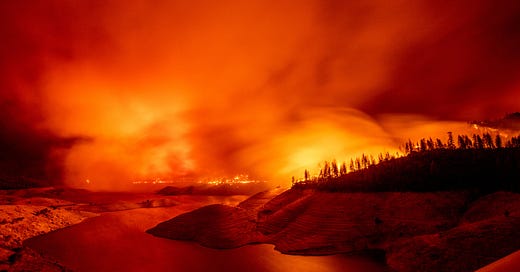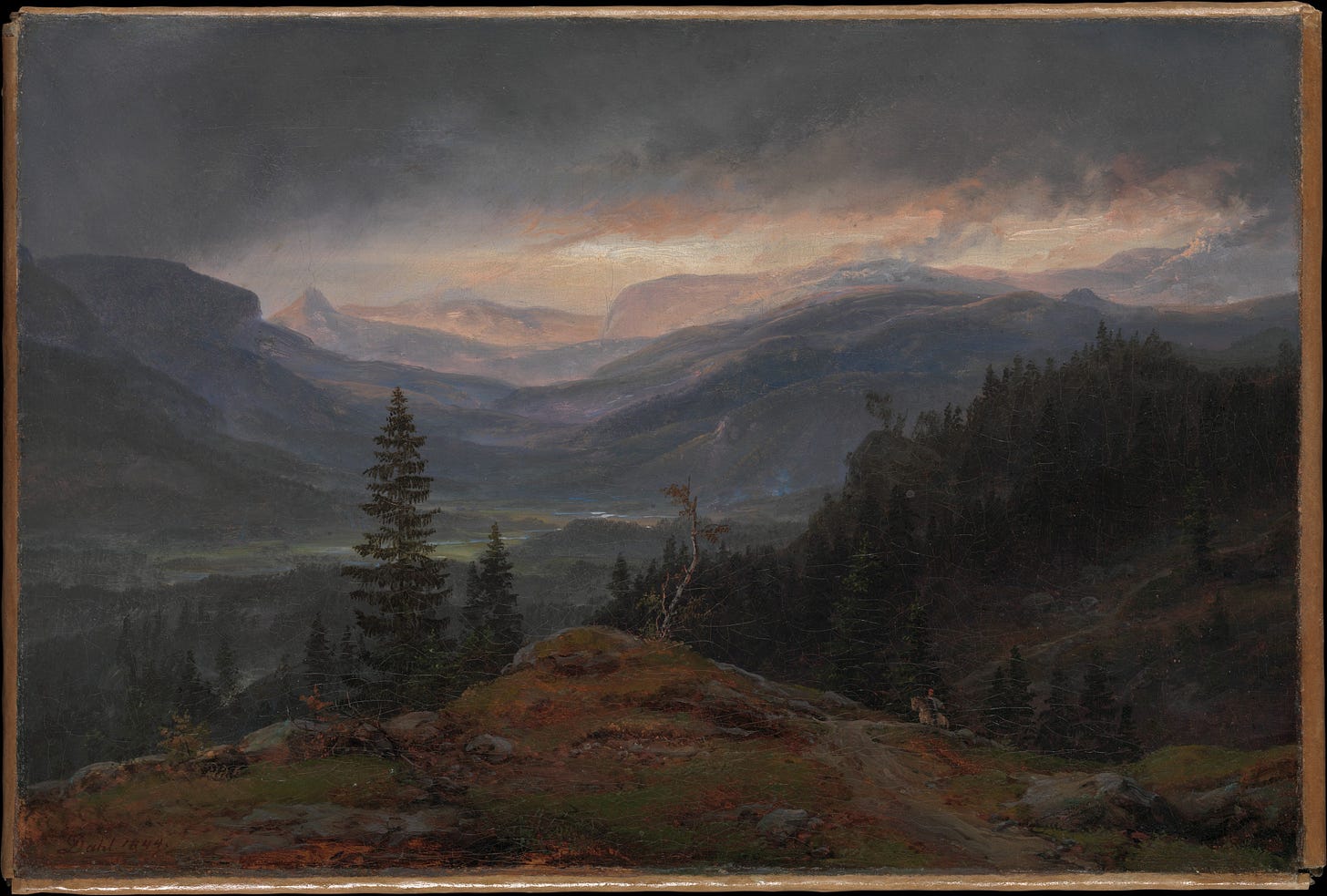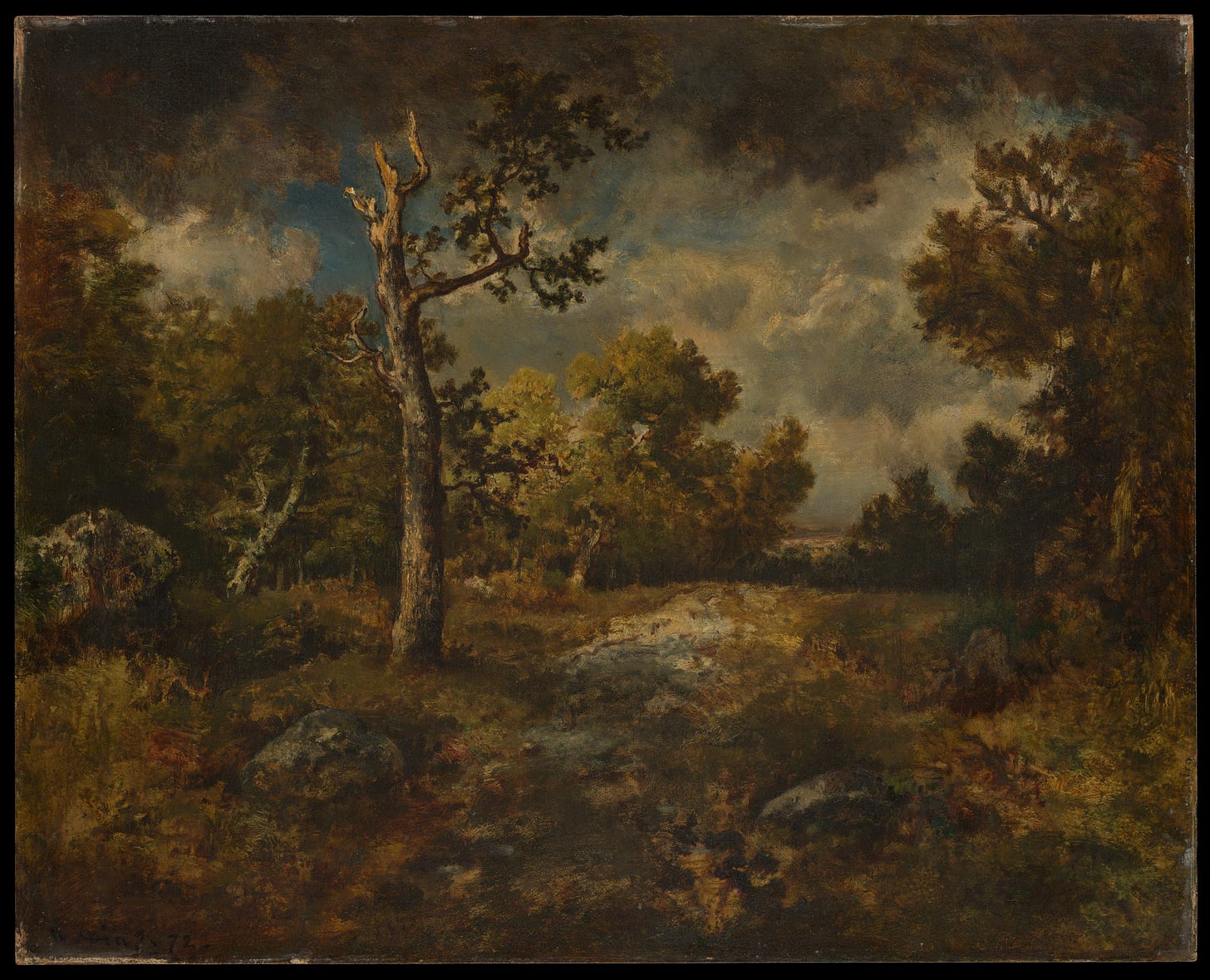"Wildness in our own Backyards": How Humans Regard Nature
Review of the essay "The Trouble with Wilderness; or, Getting Back to the Wrong Nature" by William Cronon.
As of this writing, Los Angeles is burning. The fire has already destroyed thousands of acres of land, homes, businesses, structures, and communities. It has killed several with the expectation that the death toll will rise. Through social media, residents are reacting to the events as they unfold. Some are going back to their homes that now lay in ash and tell their stories to local reporters. Others are encouraging folks to donate to the Red Cross or even donate blood. A lot of people are frustrated, angry, upset, a mix of all. It is the worst fire(s) in California history, and has already caused nearly $150 billion dollars in damage.1
I am not a reporter in any sense of the word, but watching this fire, reading about it, and seeing pictures has caused me to reflect. I live in the Northeast, and do not know nor understand the realities of this fire as I am not living through it. I am a historian who reflects on the history of us.
Watching the fire has caused me to reflect on the definition of home and memory. Too often residents of LA, as they watch their home burn, are telling their stories with “Everything was in there… all our memories.” Millions of memories, photos, letters, diaries, books, and other personal keepsakes are gone and likely unable to be recovered. Climate Change, drought, and nature caused the fire, and LA will now need to rebuild.
William Cronon is an environmental historian who has written several books on the effects of ecology and nature associated with cities and regions. His most famous book, Nature’s Metropolis: Chicago and the Great West (1992)2, transformed the historiography on environmental history. So when he wrote about nature, historians listened. In 1995, he published an essay titled The Trouble with Wilderness; or, Getting Back to the Wrong Nature3, which critiqued how the world defines wilderness and nature. This essay has never been more relevant as Climate Change rages on, and caused me to think about our role as humans in the relationship between nature.
Cronon begins the essay with how western civilization defined the wild to themselves. The wilderness to Early Europeans and Americans was terrifying, supernatural, and dark. So much of the wild was unknown, and that prospect terrified them. Cronon writes that it “was a place to which one came only against one’s will, and always in fear and trembling.”4 People did not go into nature for solitude; did not interact with it because it offered nothing for them. It was trees, rocks, mountains, flowers, etc. The natural state of the environment gave nothing to those of the western world. It was something that had the potential to be land.
It was not until the nineteenth century that people began to change what nature meant to them. In some respects, people started to look around them and developed a an appreciation for the wild instead of fear. What was once a dim forrest with unexplored terrain was now compared to the biblical Eden. What became known as Romanticism dominated the arts and literature of mid and late 1800s. It focused on how people gained inspiration and an appreciation for nature. Instead of viewing the wild as expendable, it emphasized the individuals connection to that nature. Writers began to use the landscape for their imagination through paintings, poems, and stories. Consequently, the development of the American frontier in the West raised suspicions that nature itself was ruined by human interaction. Thus, it “had to become sacred.”5
And so it did. By the start of the twentieth century, a movement for National Parks began, and environmental preservation was the center of national legislation in the United States. While Romantics believed in the individual, its connection to nature was separate. The environment was biblical and must be preserved for that reason. For those within Romanticism, nature was inspirational and “were those rare places on Earth to… glimpse the face of God.”6
Conon’s argument in this essay is rather stoic, even reminiscent of the earliest writers in Stoic philosophy like Marcus Aurelius. He writes that instead of understanding the environment as two sides of an extreme, we are connected to our it. If we imagine that “our true home is in the wilderness,” we forget about where we actually live.7 We do a disservice to the actual world around us. With respect to Climate Change, Cronon argues that:
Any way of looking at nature that encourages us to believe we are separate from nature—as wilderness tends to do—is likely to reinforce environmentally irresponsible behavior.8
By not viewing the environment as a reflection of ourselves, we change the narrative on how to understand our place within it.
Cronon’s essay is well written, expertly researched, and encapsulates a moment in time that seems to continue. Some of the essay veers off into how extreme environmentalists showcase how humans and their interaction to the environment can only truly result in the eradication of the human race. This, to be clear, he argues against as it is not logical, nor does it give realistic solutions to the human connection to the environment.
This article was the perfect one to reflect on as I thought about the recent fires and how Climate Change maintains its influence daily. Home is not just a structure to sleep and watch TV—it is as much the nature and the woods of your local state park. Home is not the just the memories we create within them, but how we treat the foundation of its influence. If we can alter the perception that we are not separated by the environment, but directly linked, we can maintain responsibility for the ongoing problem. You begin to care about what is ‘out there’ just as much as ‘in here.’ Regardless if you live in a urban, rural, or any in between, we are the nature that surrounds us. The world and nature is our home, and as astronomer Carl Sagan wrote, “Our planet is a lonely speck in the great enveloping cosmic dark. In our obscurity, in all this vastness, there is no hint that help will come from elsewhere to save us from ourselves.”9
Ayana Archie, “10 People Have Died in the Wildfires Spreading across Southern California,” NPR, January 10, 2025, https://www.npr.org/2025/01/10/g-s1-41873/california-fires-los-angeles-eaton-hurst-lidia-pasadena; for more of Ethan Swope’s brilliant photojournalism, check out his website: ethanswope.com.
This book was a finalist for the Pulitzer Prize and will someday be covered on this Substack.
This essay was part of a larger work called Uncommon Ground: Rethinking the Human Place in Nature. The original essay can be found at his website: https://www.williamcronon.net/writing/Trouble_with_Wilderness_Main.html. I used the PDF version to highlight and take notes.
William Cronon, The Trouble with Wilderness, p. 2.
William Cronon, The Trouble with Wilderness, p. 4.
William Cronon, The Trouble with Wilderness, p. 4.
William Cronon, The Trouble with Wilderness, p. 11.
William Cronon, The Trouble with Wilderness, p. 17.
Carl Sagan, Pale Blue Dot, 1994.







Well written, my friend. 💗